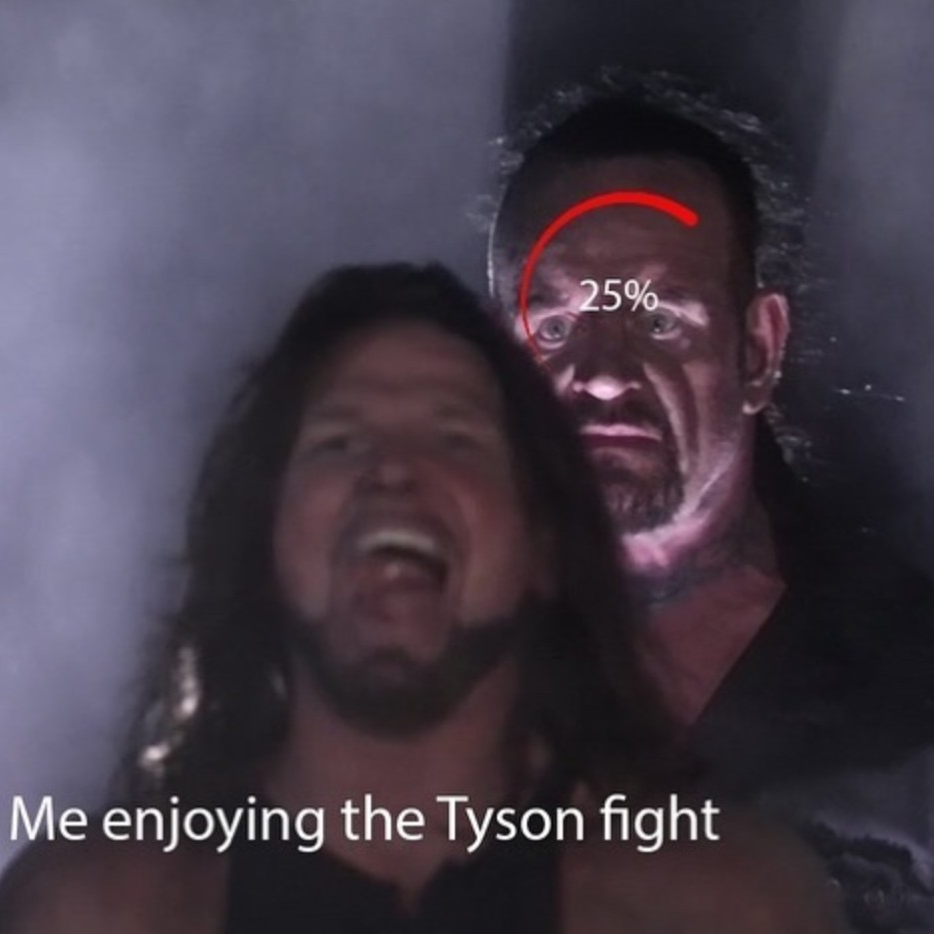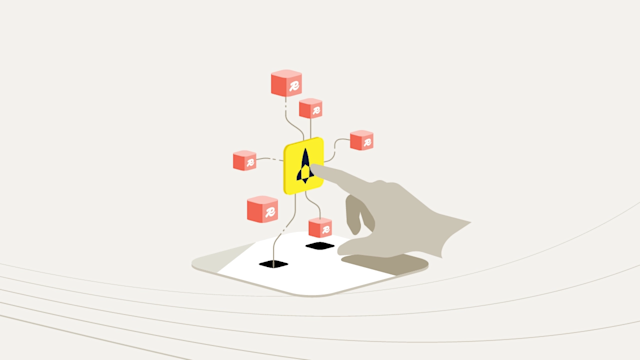Dear Netflix, Please don't ruin the holidays for 29M families (like mine)
Netflix’s live streaming struggles during the Tyson-Paul fight highlight critical design flaws in its architecture. Learn why Netflix's live sports demand a new approach.
It’s rare that I completely unplug, but this last weekend I did it. I blocked out my calendar Friday afternoon—loaded up the kid, and drove six hours north to my hometown in eastern Iowa. Saturday morning, my brother and my husband were both grumbling about the Mike Tyson and Jake Paul fight that premiered on Netflix the night before, something they both had been looking forward to for months and how Netflix "choked within seconds" of the main event going live.
My husband and brother are not technical; they are just good old hard-working American male sports enthusiasts. And my husband was not with my daughter and me up in Iowa. He was texting me from our home in Kansas City, where he had tried to watch the fight from our Netflix account with no luck. He was really upset.
In turn, my brother was sitting across the table from me at our mother’s house explaining how he and his buddies “were all trying to watch the Tyson-Paul fight live on whatever streaming service (Netflix, X, YouTube, etc.) we could, and nothing would work; it just kept freezing and rebuffering.”

After the fight, Netflix sent a press release indicating that “60 million households watched the Paul vs. Tyson main event live around the world, peaking at 65 million concurrent streams”. My questions are as follows:
1) How many tried to watch? (Freeze/rebuffering)
2) How many wanted to watch? (Load-shedding)
3) How many of those 60M were actually able to watch the entire fight? (Latency spikes, application slowdowns, drops due to cache hit rate overruns, etc.)
4) How many of those 60M actually had a positive QoE? (Quality of Experience)
The Tyson-Paul fight was a huge gamble on Netflix's 'live sports' and a huge gamble on Netflix by the fight sponsors: Celsius, DraftKings, Experian, Meta Quest, and Spaten. I would say everyone lost their bets on Friday night. According to TKO Group Holdings'—the owner of the UFC—most recent 10-K filing, Netflix has a 10-year deal (with an option for a 10-year extension) with World Wrestling Entertainment (WWE), which includes global rights as they become available. Interestingly, TKO is also shopping around for a streaming partner to air its UFC mixed-martial arts fights for the next 10 years, with Netflix being one such (arguably top) contender.
Netflix is the world's largest streaming service. In fact, it’s the largest single source of streaming internet traffic in the world, with 15% of 2023 global traffic belonging to Netflix (YouTube and Disney+ together equal another 15%). It has nearly 300 million subscribers, so Netflix knows what it’s doing in the live-streaming business.
Netflix has also dealt with “virality” in the past, so they understand how system design needs to instantly adapt to accommodate the surge of users who come to their platform from viral social media posts.
Netflix failure #1
That said, Netflix moved into new territory when it catapulted itself into live sports, as the company failed to recognize that its business model needed to adapt.
Under Netflix’s current "streaming media service" business model, its goal is to keep users streaming for as long as possible. Per this model, according to Netflix, a user’s typical attention span is about 90 seconds. If the Netflix application is not streaming fast enough, the user will likely move on to a different streaming service. The user will then try to watch their show on Netflix again later and hope to achieve better results. It's usually no big deal.
However, for a live sporting event, such as Friday night’s Paul vs. Tyson match, the audience will only tune in for the duration of the main event, which was 8x two-minute rounds, or approximately 20 minutes. This means customers fully expect to watch all 20 minutes of the Paul vs. Tyson fight at the precise moment this fight occurs – not at a later time. The "sports enthusiast customer" will (1) just keep hitting refresh, then (2) the customer will eventually try a different streaming service, and (A) the customer will just keep getting more and more frustrated with each passing second until (B) the customer's negative QoE is plastered everywhere.
This represents a very different type of business model than Netflix is used to working with.
Netflix failure #2
Next, there is a point in every design when the solution either outgrows the tool or the company outgrows the design.
Netflix’s state-of-the-art, custom-built Memcached/Cassandra/SQS cache-warming petascale storage solution is great for supporting its existing streaming media offering. However, it has proven inadequate for withstanding the virality of its future live sports streaming business.
Netflix, I commend your transition to Rust over the past year, a truly mighty feat that aligns with DARPA's long-term objective (two thumbs up!). However, it would be prudent to contemplate overhauling your entire end-to-end design as you’re pushing too much data and (we both know you’re) overrunning your <200ms SLAs with a live sporting event business model.
Dear Netflix: Aerospike can help
Netflix: To achieve your company’s long-term goal of attracting TKO’s lucrative UFC streaming contract, you will need to flatten and compact your design for live sports streaming. I can help modernize and accelerate this footprint.
For starters, you will need a tool written in C (or Rust) with 'streaming ingest and data reduction capabilities,’ which means you need Aerospike (unless you plan on hand-coding everything). Check out more about Aerospike’s upcoming session at AWS re:Invent 2024.
Otherwise, you can find Aerospike at Booth #1844. If you want an executive meeting, let me know, and I’ll arrange a private meeting with Tim and Srini. (FYI: I won’t be at Reinvent; I’ll be in Orland at I/ITSEC, covering meetings on NIST's just-announced accelerated timeframe. I plan to get enterprises moved onto the new Module-Lattice-Based/Stateless Hash-Based quantum-resistant encryption keys (FIPS203/204/205) about five years ahead of their originally scheduled 2035 timeframe.
And if you prefer a more laid-back atmosphere to meet the Aerospike team at AWS re:Invent, here’s the link to register for Tuesday night’s cocktail reception: Cloud and cocktails at TAO Restaurant.
Now then, since you secured the rights from the NFL to air both games on Christmas Day, Netflix, I will again be up in Iowa with my family, and I can only begin to imagine how long Christmas Day is going to be for me (and every other non-football-watching family member out there who would have to endure this anguish!), if my husband and my brother cannot get their football games to stream!
So, Netflix, I'm begging you. Please swing by the Aerospike booth at re:Invent, and do not ruin my family’s Christmas tradition and the Christmas traditions of 29 million other American families.
Thank you, your cooperation is appreciated.




